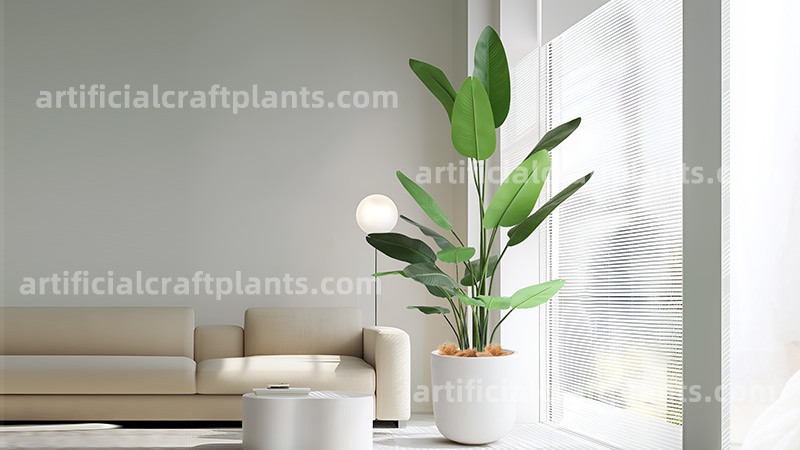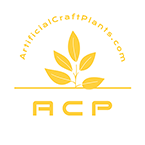Exporting artificial plants can be a lucrative business, but customs clearance often becomes a bottleneck. Complex documentation, import restrictions, and unexpected duties can cause delays or even shipment rejections. Without proper compliance, businesses risk increased costs and supply chain disruptions.
A well-prepared customs clearance strategy—covering documentation, tariff classification, and compliance with international regulations—ensures smooth and cost-effective artificial plant exports.
To help B2B exporters navigate this process, we’ve compiled a detailed checklist covering every essential compliance step.
Understanding Customs Clearance for Artificial Plant Exports
Customs clearance involves a series of procedures that ensure artificial plants comply with international trade laws and regulations. Key factors influencing customs clearance include:
- Product Classification & HS Codes — Determines import duties and restrictions. HS codes1
- Regulatory Compliance — Adhering to environmental and safety standards.
- Import Duties & Taxes — Vary by country, affecting final costs.
- Required Documentation — Ensures legal and smooth shipments.
Essential Customs Documentation Checklist
Missing or incorrect paperwork is the most common reason for customs delays. Ensure your shipment includes:
1. Commercial Invoice
- Must include product details, HS codes, quantity, and total value. commercial invoice2
- Needs to match the purchase order and packing list.
2. Packing List
- Specifies the number of cartons, weight, and dimensions.
- Should align with the commercial invoice to avoid discrepancies.
3. Bill of Lading (B/L) or Airway Bill (AWB)
- Issued by the freight carrier as proof of shipment.
- Sea Freight: Ocean Bill of Lading (OBL) or House Bill of Lading (HBL).
- Air Freight: Airway Bill (AWB).
4. Certificate of Origin (CO)
- Required for countries with Free Trade Agreement (FTAs). World Trade Organization3
- Helps reduce import duties if applicable.
5. Phytosanitary Certificate (If Required)
- Some countries require this to ensure artificial plants are free from pests or chemicals. International Plant Protection Convention4
- Mostly needed if artificial plants contain preserved moss, wood, or natural elements.
6. Import License (If Applicable)
- Some regions, like the EU or Middle East, may require import licenses for synthetic products. [WTO's Import Licensing](https://www.wto.org/english/tratop_e/imp lic_e/imp lic_e.htm)5
7. Material Safety Data Sheet (MSDS) (If Applicable)
- Required for fire-retardant or chemically treated artificial plants. OSHA's MSDS guidelines6
HS Codes & Import Duties for Artificial Plants
Correct Harmonized System (HS) codes are crucial for customs classification. Incorrect codes may lead to delays or incorrect duty assessments.
| Product Type | Common HS Code | Estimated Import Duty (Varies by Country) |
|---|---|---|
| Artificial Plants (Plastic) | 6702.10 | 5% - 15% |
| Artificial Flowers | 6702.90 | 5% - 20% |
| Artificial Trees | 6702.90 | 5% - 12% |
| Artificial Moss (Preserved) | 0604.90 | 0% - 10% |
Tip: Check the specific tariff rates of your destination country through online customs portals. World Bank's WITS7
Compliance with Country-Specific Import Regulations
Each country has different import restrictions for artificial plants. Failing to comply can lead to shipment rejections or fines.
United States (US)
- Regulations: Must comply with CPSIA (Consumer Product Safety Improvement Act) if selling to retailers. CPSIA8
- Duties & Tariffs: Average 5-12%. US Customs and Border Protection9
- Additional Requirements: Labeling must follow FTC standards. US Department of Commerce's labeling page10
European Union (EU)
- Regulations: REACH compliance for chemical safety in synthetic plants. European Commission REACH11
- Duties & Tariffs: Varies by country, often 5-10%. European Commission Trade12
- Additional Requirements: CE marking required for flame-retardant products. CE marking13
Middle East (UAE, Saudi Arabia)
- Regulations: Some Gulf countries require GCC Conformity Marking. Gulf Standardization Organization14
- Duties & Tariffs: Standard GCC tariff is around 5%. GCC Customs Union15
- Additional Requirements: Arabic labeling may be required. UAE Ministry of Economy16
Australia
- Regulations: May require phytosanitary clearance for artificial plants with wood elements. Australian Department of Agriculture17
- Duties & Tariffs: Around 5-10%. Australian Border Force18
Cost-Saving Strategies for Smooth Customs Clearance
1. Work with Experienced Freight Forwarders
- Freight agents specializing in artificial plants can help with HS code classification and duty calculations. FIATA19
2. Use Free Trade agreements (FTAs)
- If exporting from China, check for trade agreements with the destination country to reduce tariffs. World Trade Organization's FTAs page20
3. Ensure Proper Labeling & Compliance
- Avoid delays by following labeling regulations, such as fire resistance or chemical safety labels. International Trade Administration21
4. Pre-Clear Shipments Before Arrival
- Many countries allow pre-customs clearance, reducing storage fees and delays. World Customs Organization's AEO programme22
Common Myths About Export Customs Clearance
"All artificial plants have the same HS code."
False! HS codes vary by material (plastic, fabric, silk) and type (tree, flower, moss).
"Customs clearance is only about paperwork."
Not true! Compliance with safety regulations and proper labeling is equally important.
"Duty-free means no customs clearance is needed."
Even if duties are waived, shipments still require documentation and inspection.
Conclusion
Exporting artificial plants requires careful attention to customs documentation, compliance regulations, and duty classifications. By following a structured checklist and working with experienced logistics partners, B2B exporters can avoid costly delays and ensure seamless global shipments. A well-planned customs strategy isn’t just about avoiding problems—it’s about maximizing profitability and business efficiency.
Footnotes
-
Explanation: Official website of the World Customs Organization providing the Harmonized System (HS) nomenclature used for classifying goods in international trade. ↩
-
Explanation: Guide from the US Department of Commerce on what a commercial invoice should include. ↩
-
Explanation: World Trade Organization's page on Rules of Origin, which explains the importance and requirements for Certificates of Origin. ↩
-
Explanation: International Plant Protection Convention's website, which provides information on phytosanitary measures and certifications. ↩
-
Explanation: World Trade Organization's page on import licensing, which details the procedures and requirements for obtaining import licenses. ↩
-
Explanation: OSHA's guidelines on Material Safety Data Sheets (MSDS), which are crucial for handling and understanding the safety aspects of chemically treated products. ↩
-
Explanation: World Bank's World Integrated Trade Solution (WITS) database, which allows users to compare and check tariff rates across different countries. ↩
-
Explanation: US Consumer Product Safety Commission's guide on the Consumer Product Safety Improvement Act (CPSIA), which sets forth safety requirements for children's products. ↩
-
Explanation: US Customs and Border Protection's trade page, which provides information on import requirements, duties, and tariffs. ↩
-
Explanation: US Department of Commerce's page on labeling requirements for exported goods. ↩
-
Explanation: European Commission's page on the Registration, Evaluation, Authorisation and Restriction of Chemicals (REACH) regulation, which governs the use of chemicals in the EU. ↩
-
Explanation: European Commission's trade portal, offering information on trade policies, agreements, and tariffs. ↩
-
Explanation: European Commission's information on CE marking, which indicates that a product meets EU health, safety, and environmental requirements. ↩
-
Explanation: Gulf Standardization Organization's main page, which provides standards and conformity markings for Gulf Cooperation Council (GCC) countries. ↩
-
Explanation: GCC Customs Union's page on economic affairs, detailing customs union policies and tariff rates. ↩
-
Explanation: UAE Ministry of Economy's website, which provides information on trade regulations and requirements for businesses. ↩
-
Explanation: Australian Department of Agriculture's page on importing plants, including artificial plants with natural elements that might require phytosanitary clearance. ↩
-
Explanation: Australian Border Force's page on customs and tariff operations, providing details on import duties and regulations. ↩
-
Explanation: FIATA (International Federation of Freight Forwarders Associations) website, which offers resources and standards for freight forwarders. ↩
-
Explanation: World Trade Organization's page on regional trade agreements, which includes information on free trade agreements (FTAs) that can be used to reduce tariffs. ↩
-
Explanation: International Trade Administration's page on labeling requirements for exported goods, ensuring compliance with international standards. ↩
-
Explanation: World Customs Organization's Authorized Economic Operator (AEO) programme, which allows for pre-clearance and other facilitation measures to streamline customs processes. ↩

Hello everyone, I'm Li!By day, I'm a seasoned expert in the artificial plant industry, starting from the factory floor and working my way up to running my own successful business. In my free time, I’m passionate about running and often join trail runs with friends.Here to share what I've learned—let's grow together!



